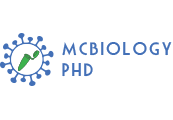Honors and Fellowships
1985 Research Fellowship (CNR-NATO), Department of Zoology, U.C., London.
1992-1993 CNR fellowship, Dept. of Mol. Genetics, Ohio State University, Columbus, Visiting Professor .
1999 CNR fellowship, Dept. of Biology and Biochemistry, Center of Regenerative Medicine”, Bath University, UK , Visiting Professor .
Funding:
2009 Fondazione Roma: Stem cell based approaches to monogenic diseases
Professional Memberships
2000-present Gruppo Embriologico Italiano (GEI)
2014-present Centro Internazionale di Medicina Rigenerativa Università di Roma Tor Vergata (CIMER)
Research field
Our lab group has always been interested in regeneration processes in Vertebrates. Most lately we focused our attention on skeletal muscle tissue engineering in order to promote muscle regeneration and engineered artificial muscle construction exploiting biomaterial technology. An increasing emphasis on design biomaterial (inert, biocompatible, biofunctional, bioactive and resorbable) in respect of basic mechanism of cell-matrix interactions and cell signaling are being successfully for biomaterial to stem cell biology; therefore regenerating tissue or engineering tissue-like structure by the aid of biomaterial may be a potential solution for the replacement of lost, damaged or failing tissue and organs. Skeletal muscle tissue regeneration and/or reconstruction using tissue engineering methods would be successful for the treatment of a variety of muscle disorders likewise traumatic injury, muscular sphincter incontinence and massive tumor ablation that are common clinical evidences resulting in a significant loss of muscle tissue that require surgical reconstruction. The major challenge for muscle in vitro re-building, as brings out from previous work described, is to re-establish the natural muscle architecture characterized by parallel fiber alignment, in order to obtain a functional muscle-like tissue. Hence our research is following two main directions: in vivo myoblast transfer therapy for skeletal muscle tissue regeneration and in vitro and in vivo tissue engineering for muscle reconstruction. Recently, increasingly the attention about tissue engineering, we began to investigate new myogenic stem cell populations and new technologies in order to enhance architectural and cellular complexity of artificial tissue. Thus we settled the isolation and characterization of perivascular myogenic precursor, namely pericytes, showing amazing capabilities in terms of proliferation and over all muscle differentiation. Furthermore, revealing a considerable role in supporting endothelial cells during angiogenesis. Besides, in collaboration with Campus Biomedico of Rome, we started to explore new technologies to ameliorate tendon tissue engineering and skeletal muscle tissue engineering, such as 3D bio-printing techniques. More over, we started an international collaboration with the ICRC of Brno (Czech Republic), regarding the set up of a novel Neuromuscolar junction (NMJ) model to investigate the occurance of NMJ mismatches in diseases.
Publications
Gargioli C, Turturici G, Barreca MM, Spinello W, Fuoco C, Testa S, Feo S, Cannata S, Cossu G, Sconzo G, Geraci F (2018). Oxidative stress preconditioning of mouse perivascular myogenic progenitors selects a subpopulation of cells with a distinct survival advantage in vitro and in vivo. CELL DEATH & DISEASE, vol. 9, p. 1-12, ISSN: 2041-4889, doi: 10.1038/s41419-017-0012-9.
Testa S, Costantini M, E Fornetti, Bernardini S, Trombetta M, Seliktar D, Cannata S, Rainer A, Gargioli C (2017). Combination of biochemical and mechanical cues for tendon tissue engineering . JOURNAL OF CELLULAR AND MOLECULAR MEDICINE, vol. Epub ahead of print], ISSN: 1582-4934, doi: 10.1111/jcmm.13186
Costantini M, Testa S, Mozetic P, Barbetta A, Fuoco C, Fornetti E, Tamiro F, Bernardini S, Jaroszewicz J, Swieszkowski W, Trombetta M, Castagnoli L, Seliktar D, Garstecki P, Cesareni G, Cannata S, Rainer A, Gargioli C (2017). Microfluidic-enhanced 3D bioprinting of aligned myoblast-laden hydrogels leads to functionally organized myofibers in vitro and in vivo. BIOMATERIALS, vol. 131, p. 98-110, ISSN: 0142-9612, doi: http://dx.doi.org/10.1016/j.biomaterials.2017.03.026
Vono R, Fuoco C, Testa S, Pirrò S, Maselli D, Mc Collough DF, Sangalli E, Pintus G, Giordo R, Finzi G, Sessa F, Cardani R, Gotti A, Losa S, Cesareni G, Rizzi R, Bearzi C, Cannata S, Spinetti G, Gargioli C, Madeddu P (2016). Activation of the Pro-Oxidant PKCβII-p66Shc Signaling Pathway Contributes to Pericyte Dysfunction in Skeletal Muscles of Diabetic Patients with Critical Limb Ischemia.. DIABETES, vol. Epub ahead of print, ISSN: 1939-327X, doi: 10.2337/db16-0248
Fuoco C, Petrilli LL, Cannata S, Gargioli C (2016). Matrix scaffolding for stem cell guidance toward skeletal muscle tissue engineering.. JOURNAL OF ORTHOPAEDIC SURGERY AND RESEARCH, vol. 11, ISSN: 1749-799X, doi: 10.1186/s13018-016-0421-y.
Fuoco C, Rizzi R, Biondo A, Longa E, Mascaro A, Shapira-Schweitzer K, Kossovar O, Benedetti S, Salvatori ML, Santoleri S, Testa S, Bernardini S, Bottinelli R, Bearzi C, Cannata S, Seliktar D, Cossu G, Gargioli C. (2015). In vivo generation of a mature and functional artificial skeletal muscle. EMBO MOLECULAR MEDICINE, ISSN: 1757-4676, doi: 10.15252/emmm.201404062
Fuoco C, Sangalli E, Vono R, Testa S, Sacchetti B, Latronico MV, Bernardini S, Madeddu P, Cesareni G, Seliktar D, Rizzi R, Bearzi C, Cannata S, Spinetti G, Gargioli C. (2014). 3D hydrogel environment rejuvenates aged pericytes for skeletal muscle tissue engineering. FRONTIERS IN PHYSIOLOGY, vol. 30, ISSN: 1664-042X, doi: 10.3389/fphys.2014.00203. eCollection 2014.
Langone F, Cannata S, Fuoco, Lettieri Barbato D, Testa S, Nardozza AP, Ciriolo MR, Castagnoli L, Gargioli C, Cesareni G (2014). Metformin Protects Skeletal Muscle from Cardiotoxin Induced Degeneration. PLOS ONE, vol. 9, ISSN: 1932-6203, doi: 10.1371/journal.pone.0114018
Fuoco C, Cannata S, Bottinelli R, Seliktar D, Cossu G, Gargioli C (2012). Autologous progenitor cells in a hydrogel form a supernumerary and functional skeletal muscle in vivo. JOURNAL OF TISSUE ENGINEERING AND REGENERATIVE MEDICINE, vol. 6, ISSN: 1932-6254
Fuoco C, Salvatori L, Biondo A, Shapira-Schweitzer K, Santoleri S, Antonini S, Bernardini S, Tedesco S, Cannata S, Seliktar D, Cossu G, Gargioli C (2012). Injectable PEG-fibrinogen hydrogel adjuvant improves survival and differentiation of transplanted myogenic progenitors in acute and chronic skeletal muscle degeneration. SKELETAL MUSCLE, ISSN: 2044-5040, doi: 10.1186/2044-5040-2-24


